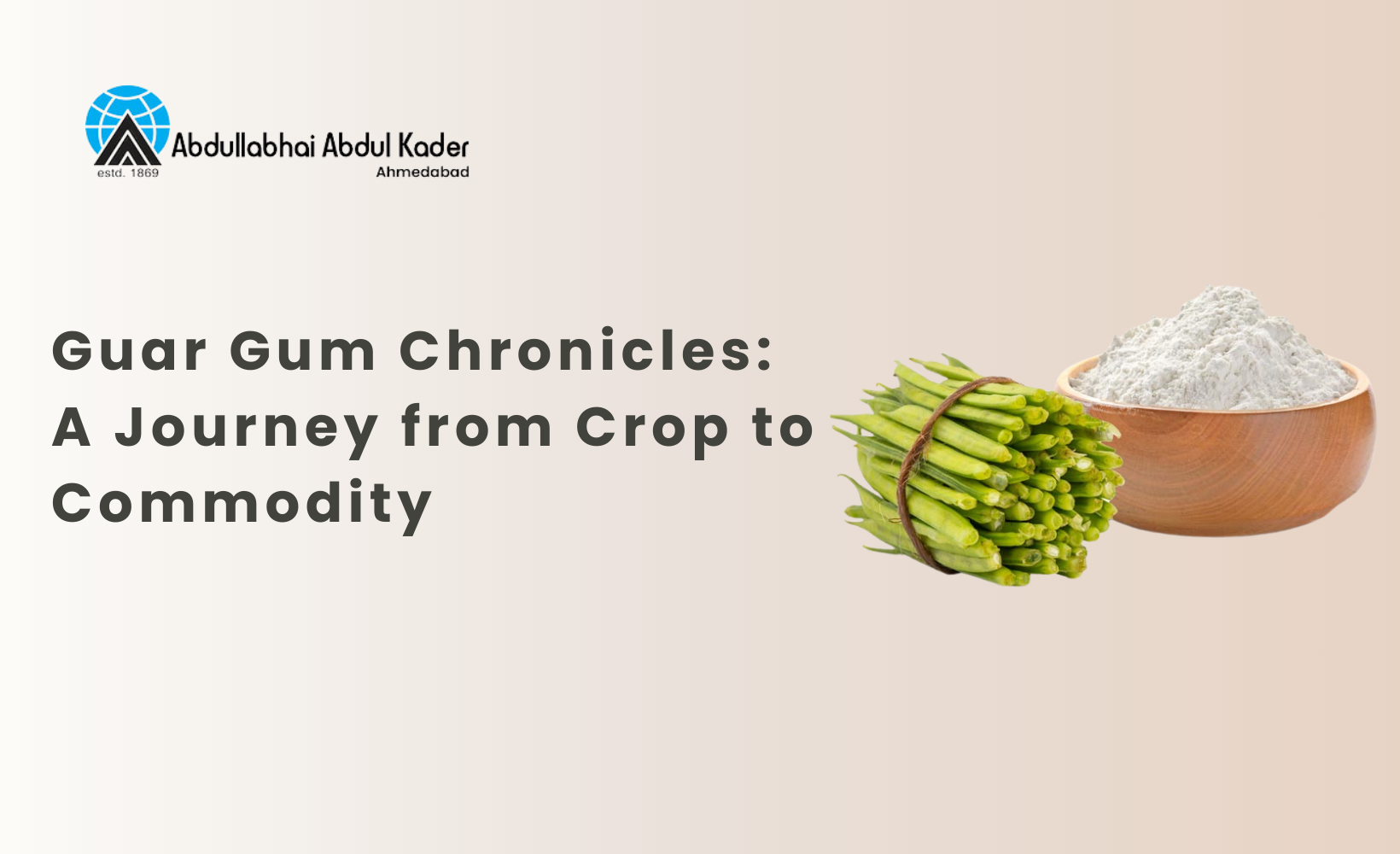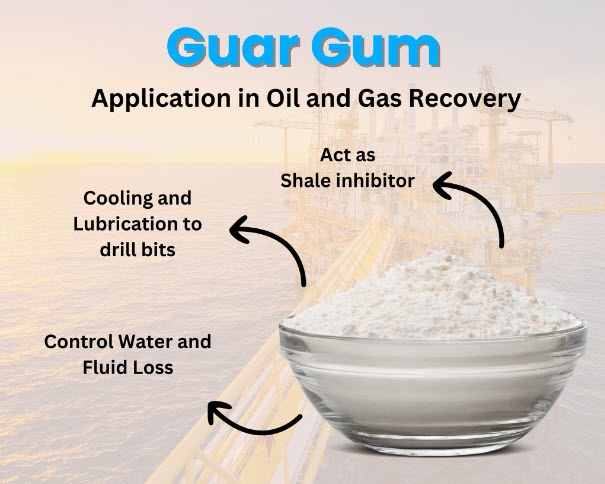
Guar gum, a versatile ingredient used in industries ranging from food to pharmaceuticals, owes its effectiveness to a meticulous manufacturing process that starts in the fields and ends as a fine powder ready for use. In this article, we delve into the various stages involved in transforming guar beans into high-quality guar gum powder, highlighting each crucial step of the journey.

1. The Origins: Cultivation of Guar Beans
The journey of guar gum begins with the cultivation of guar beans. Guar beans are predominantly grown in the semi-arid regions of India and Pakistan, with India producing approximately 80-85% of the world’s guar beans. These hardy plants thrive in semi-arid climates, which are characterized by dry conditions with limited rainfall. The resilience of these crops has made guar beans a vital agricultural product, especially in regions that experience less favorable growing conditions.
Farmers sow guar beans in the early monsoon season, and the plants take around three to four months to mature. During this period, they grow into short, bushy plants that bear small pods filled with seeds—the raw material for guar gum powder. The cultivation process is crucial to the overall quality of guar gum, as factors such as soil quality and climate directly influence the yield and viscosity of the gum produced.
2. Harvesting Guar Beans: Timing is Key
After the plants reach maturity, the guar beans are harvested. The timing of harvest is critical, as beans that are left too long in the field may lose their moisture content or become damaged by pests. The beans are collected and allowed to dry in the sun, which reduces the moisture content and prepares them for the next steps in the process.
Drying is a vital stage because the moisture level of the beans directly affects the quality of the final product. If the beans retain too much moisture, they may spoil during storage or processing, leading to a lower-quality gum. Therefore, farmers carefully monitor the drying process to ensure the beans are ready for production.
3. Cleaning and Sorting: Eliminating Impurities
Before the beans can be transformed into guar gum, they undergo a rigorous cleaning and sorting process. This step is essential to remove dirt, stones, and other impurities that could compromise the quality of the gum. Using mechanical cleaning techniques, the beans are passed through multiple stages where debris is removed, leaving only the clean, high-quality beans for processing.
In addition to cleaning, the beans are sorted based on size and quality. This ensures that only the best beans are used for guar gum production, while lower-quality beans may be diverted to other uses or further refined. The sorting process plays a significant role in determining the grade of the final guar gum powder, as higher-quality beans yield a more consistent and pure product.
4. Dehusking and Splitting: Preparing the Beans
Once cleaned, the guar beans undergo dehusking and splitting. The outer husk, which is inedible, is removed, revealing the inner part of the bean known as the endosperm. The endosperm is where the majority of the guar gum resides, making this a critical step in the process.
The dehusking process is done mechanically, and the beans are split into smaller pieces for easier processing. The endosperm is further separated from the germ, leaving only the parts of the bean that contain the highest concentrations of guar gum.
5. Grinding and Milling: Creating Guar Gum Powder
After the beans are dehusked and split, the endosperm is ground into a fine powder—the final product known as guar gum powder. Grinding and milling must be performed with precision to ensure the correct particle size, texture, and viscosity of the powder. During this stage, the split endosperm is fed into grinding machines that break it down into a fine powder.
Milling is carefully controlled to achieve a consistent particle size, as this directly impacts the usability of the guar gum in various applications. For example, guar gum used in food products must have a fine texture to ensure even distribution and proper thickening. In contrast, industrial-grade guar gum may have slightly coarser particles, depending on its intended use.
6. Screening and Sieving: Refining the Product
Once the grinding process is complete, the guar gum powder undergoes screening and sieving. This step is designed to remove any larger particles or remaining impurities, leaving a smooth, high-quality powder that meets industry standards. Sieving is typically done through fine mesh screens, which ensure that the guar gum powder has a uniform texture and consistency.
This refinement process is crucial for producing guar gum powder that performs well in applications such as food, pharmaceuticals, and cosmetics. Any inconsistencies in particle size or purity could result in a subpar product that doesn’t meet customer expectations.
7. Quality Control: Ensuring Consistency and Purity
At every stage of the manufacturing process, quality control is paramount. Samples of the guar gum powder are taken and tested for various parameters, including viscosity, purity, and particle size. These tests ensure that the product meets both industry standards and customer specifications.
The quality control process is particularly important for food-grade guar gum, which must meet strict safety and hygiene standards. In addition to internal testing, many manufacturers also send their guar gum powder to third-party labs for independent verification, further ensuring the quality and safety of the product.
8. Packaging and Distribution: Ready for the World
Once the guar gum powder passes all quality control tests, it is packaged for distribution. Depending on the customer’s requirements, the powder is packed in a variety of containers, ranging from small bags to large bulk sacks. Guar gum is shipped worldwide to industries such as food, pharmaceuticals, cosmetics, and oil drilling, where its thickening, stabilizing, and emulsifying properties are highly valued.
At Abdullabhai Abdul Kader (Ahmedabad), packaging is tailored to meet the needs of customers in various countries, including the USA, Brazil, Australia, and beyond. Products are often packed in moisture-proof bags or jumbo sacks to maintain the quality of the gum during transit and storage.
9. Sustainability: A Future-Forward Approach
In addition to its versatility and wide range of applications, guar gum is gaining attention for its environmental benefits. The guar plant is drought-resistant and requires minimal water to grow, making it an ideal crop for regions facing water scarcity. Furthermore, guar gum production has a relatively low environmental impact compared to other industrial additives, contributing to a more sustainable supply chain.
Many guar gum manufacturers are also investing in eco-friendly processing techniques and sustainable farming practices, further enhancing the crop’s positive environmental profile. By reducing water usage, minimizing waste, and promoting responsible agriculture, the guar gum industry is positioning itself as a leader in sustainable production.
Conclusion: The Global Impact of Guar Gum
The guar gum manufacturing process is a testament to the power of nature and modern technology working in harmony. From the cultivation of guar beans in India’s semi-arid regions to the finely milled powder used in industries around the world, every step in the process contributes to the production of this valuable ingredient.
As demand for natural and sustainable products continues to rise, guar gum is poised to play an even larger role in industries ranging from food to pharmaceuticals. With its wide-ranging applications and eco-friendly credentials, guar gum is truly a product for the future.



